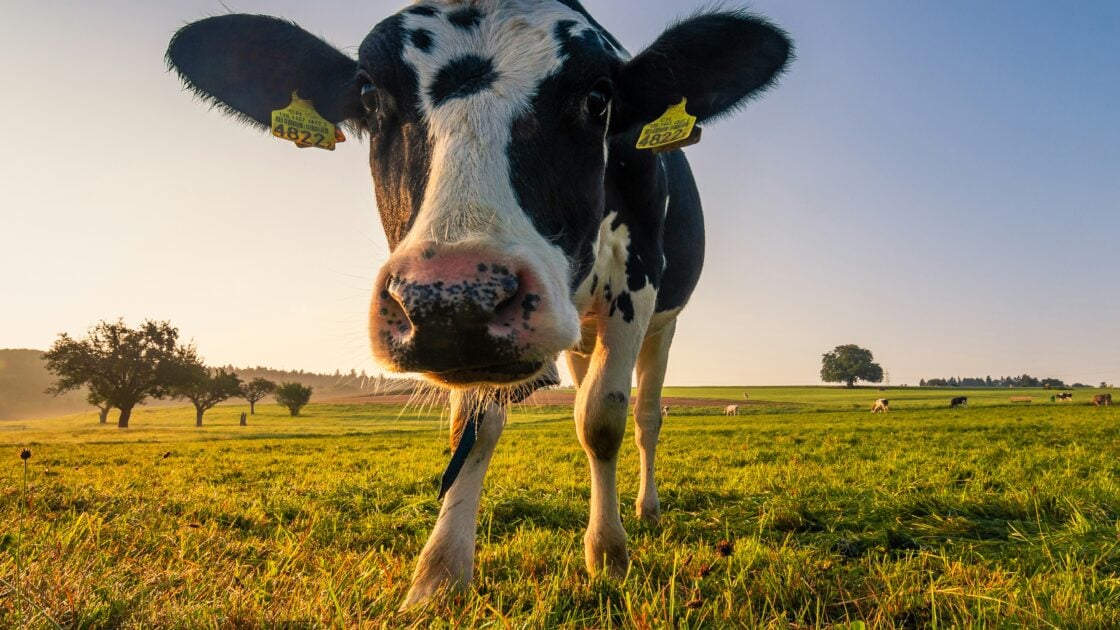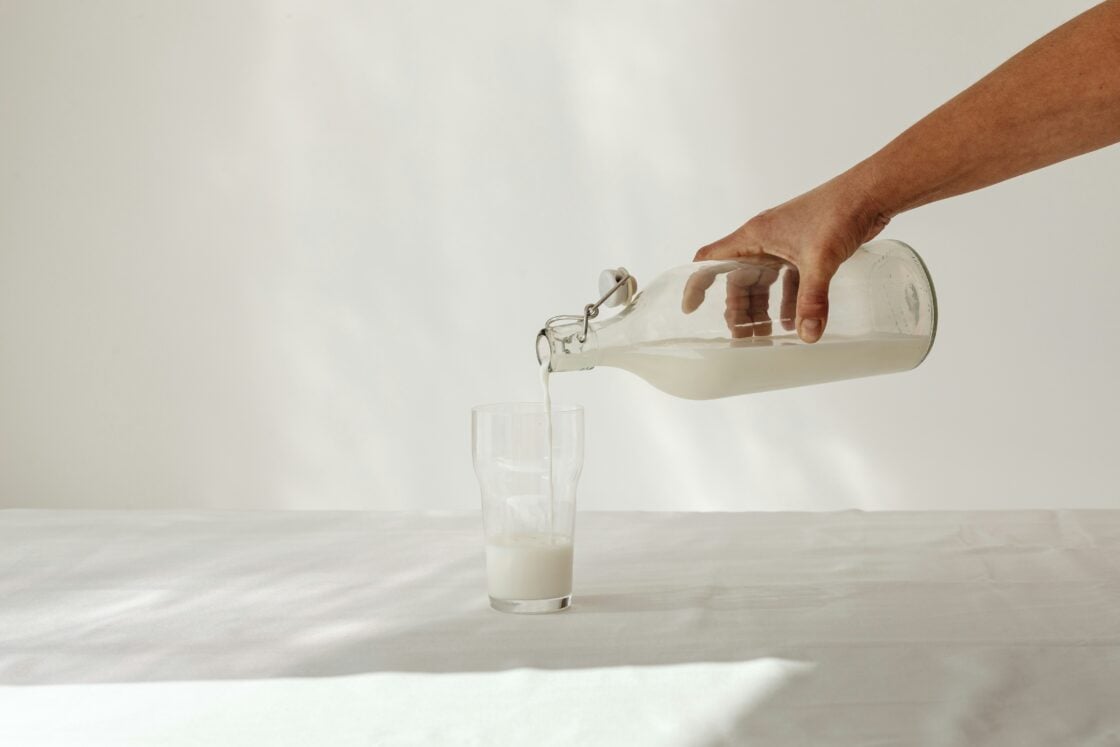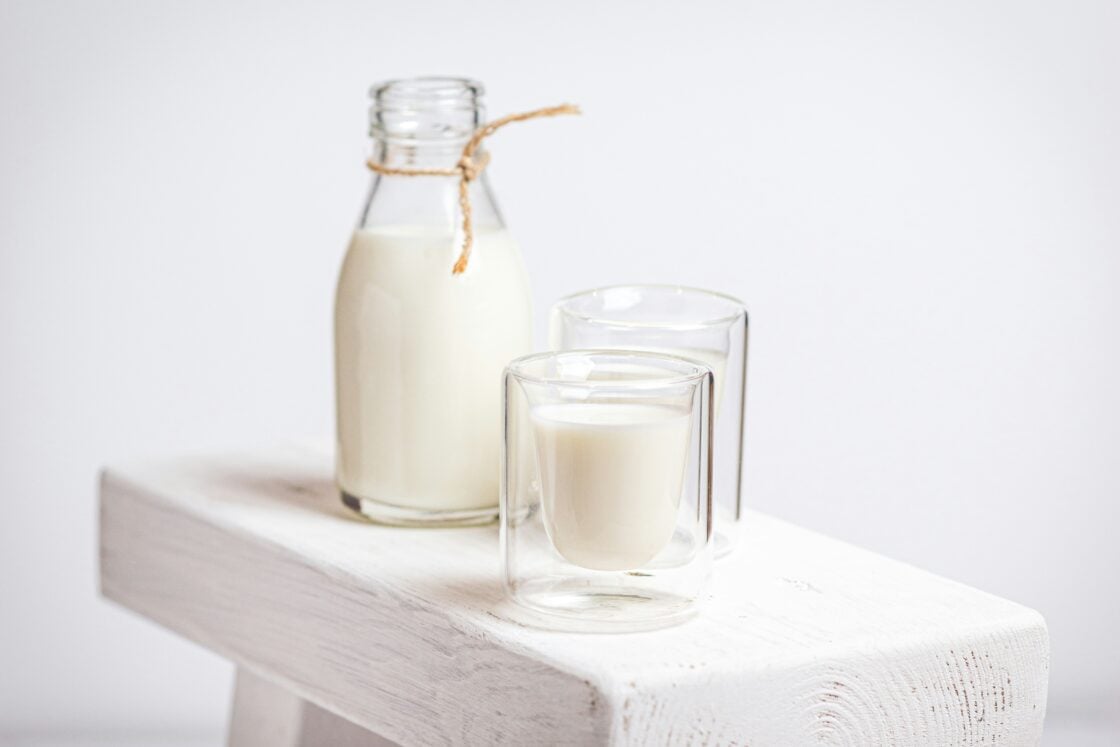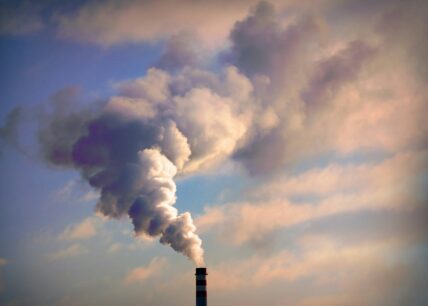
Alternative milks are hardly alternative in a world where a barista balks at a request for dairy milk. But old-fashioned dairy is indeed making a comeback, as data from Circana shows. After decades of choosing plant-based milks, in 2024, American consumption of whole milk rose for just the second time since the ‘70s, while plant milk consumption fell 5.9 percent.
“For dairy milk to be growing at all is surprising, much less by these numbers,” John Crawford, Circana’s dairy expert, told the New York Times of the 3.2 percent increase in consumption of whole milk. “This reverses trends that have been in place for decades.”
But even the dairy milk industry is now wrought with decisions to be made. These days, consumers can choose between raw and pasteurized, A1 and A2. Each choice has effects on both our health and that of the environment. Here’s what you need to know.
Want more nutrition news? Sign up for the newsletter for more well-researched, non-toxic living guidance and smart wellness advice.
Real Dairy Milk is a Climate Drain

For decades, traditional cow’s milk dairy was denigrated as the least healthy, least sustainable option. And it’s not unfair to point fingers. While dairy farming is indeed becoming more efficient, according to the Food and Agriculture Organization of the United Nations, the fact remains that ruminants like cows account for 75% of the total CO2-equivalent emissions from the livestock sector, and the global dairy industry emits 4% of manmade greenhouse gas emissions.2
“If you consume animal products, organic, humanely produced, grass-fed dairy from small scale family farms is probably the best choice.” — Errol Schweizer, member of the IPES-Food panel
It doesn’t help that the baseline, when it comes to dairy quality in the U.S., is fairly low. This stems in part to a reliance on GMO feed, just one part of the way the sector keeps conventional dairy relatively cheap. But this isn’t a good thing, according to Errol Schweizer, a member of the IPES-Food panel with 30 years of experience in the food industry.
“Our milk production and pricing model is profoundly messed up, based on economies of scale and how the government sets baseline farm gate pricing for milk,” he explains. “Farmers are incentivized to overproduce and get big or get out, leading to many farm bankruptcies every year, and meaning we now have little but larger factory farms (especially in California, Idaho and Texas), while the traditional small scale family farm is becoming endangered.”
Benefits of Raw Milk vs Pasteurized Milk

Is Raw Milk a Nutritional Powerhouse or a Massive Health Risk?
Milk is a nutrient powerhouse, according to Dave Asprey, New York Times bestselling author of Heavily Meditated. “The most nutritious milk usually comes from animals,” he says. And many Americans looking to reap these nutritional benefits have recently been turning to raw milk, which Asprey characterizes as “probably one of the most nutritious milks you can consume.”
This, he attributes, to the presence of immune factors, enzymes, and probiotics that are destroyed during the pasteurization and homogenization process most milks undergo before sale. In 2024, raw milk sales spiked by a whopping 17.6 percent in the U.S., and these numbers may only continue to rise, especially given Health and Human Services secretary Robert F. Kennedy Jr.’s passion for the product.
What are your thoughts on real dairy milk versus the alternatives? Share with the community in the comments below.
Is Pasteurized Milk the Standard for Safety?
But many experts warn against consuming raw milk given the increased likelihood of contamination with dangerous bacteria like salmonella, E. coli, campylobacter, and listeria. Compounded by the ever-increasing presence of H5N1, also known as bird flu, in American cow herds, now more than ever before, many experts warn against consuming raw milk.1
Low-Heat Pasteurized Milk: A Middle Ground?

“I don’t know why anyone would take the risk of raw milk these days,” says Schweizer.
For Asprey, raw milk consumption is safe so long as you get it straight from the (reputable) source. But fears over contamination, compounded with the fact that, despite its popularity, raw milk remains banned from interstate commerce, leads some to seek alternatives. One is low-heat-pasteurized non-homogenized milk, which Schweizer says can offer the best of both worlds, preserving much of its protein structure while also being safe from virulent viruses, bacteria, and other pathogens.
Choose Grass-Fed Dairy Products, A2 Milk from Small Family Farms for Better Digestion
In addition to choosing between raw and pasteurized milk, many American consumers now have the choice between A1 and A2 milk. This distinction is a reference to casein, the protein in cow’s milk that may be inflammatory, leading to lactose intolerance-like symptoms. But A2 casein, present in the milk of goats, sheep, buffalo, and some cows, Asprey explains, doesn’t have the same inflammatory effects.
When buying milk from the supermarket, Asprey suggests seeking out organic, grass-fed, A2 cow’s milk, which is more nutritious and less inflammatory than alternatives..3, 4
Schweizer agrees. “If you consume animal products, organic, humanely produced, grass-fed dairy from small scale family farms is probably the best choice,” he says, citing Organic Valley and Maple Hill as widely available brands. “If you can find a local, biodynamic product like Seven Stars or Hawthorne Valley, even better.”
Real Milk vs. Plant-Based: Sustainability and Your Health

Plant milks are a more sustainable option than even the best cow’s milk, generating about a third or less of the greenhouse gas emissions of traditional dairy. Even almond milk, which has a similar water footprint to dairy, is responsible for less than a quarter of the greenhouse gas emissions of dairy milk.
But when it comes to their nutrient content, plant-based milks pale in comparison to dairy. While many plant milks are fortified to help them match the micronutrient profile of dairy, researchers found “notable differences” in the protein, zinc, and potassium content of plant milks. Many plant-based milks also contain additives, stabilizers, emulsifiers, and added sugar, leading many consumers to shift away from them, according to the New York Times.
Choose Oat Milk for the Planet
When it comes to sustainability, Schweizer notes that organic oat milk is “by far the most ecologically sustainable.”
“Oats are hardy and drought tolerant and nutrient dense and have a nice, creamy mouth feel,” he explains. Since conventional oats are often sprayed with glyphosate, a known human carcinogen, he recommends seeking out organic oat milk from brands like Oatly or Pacific Foods.
Asprey nevertheless notes that oat milk is far from the healthiest option from an inflammatory perspective.
“Don’t even touch oat milk or almond milk,” he counsels. “These contain high levels of plant anti-nutrients like oxalates and lectins that steal your minerals, wreck your gut, and cause widespread inflammation.”
Legume Milks Are the Future
Pea protein milk is one of the more sustainable plant-based options, with far fewer emissions and a fraction of the total water needs of most other milks. And as an added bonus, pea protein milk has nearly the same amount of protein as dairy milk.
Good old-fashioned soy milk is also a great option, especially now that potential links to hormone-based cancers have been debunked. Its low environmental impact and high protein content make it a no-brainer. It’s no wonder that, in addition to sustainable oat milk, Schweizer dubs legume-based milks “the future of milk.”
Sources:
- https://www.fda.gov/food/buy-store-serve-safe-food/raw-milk-misconceptions-and-danger-raw-milk-consumption
- https://www.fao.org/4/i3461e/i3461e.pdf
- https://www.cambridge.org/core/journals/renewable-agriculture-and-food-systems/article/abs/comparison-of-consumer-perceptions-and-preference-toward-organic-versus-conventionally-produced-foods-a-review-and-update-of-the-literature/C2F3A395FE8E8771EA27DABBFE7476AA
- https://pubmed.ncbi.nlm.nih.gov/25497795/



